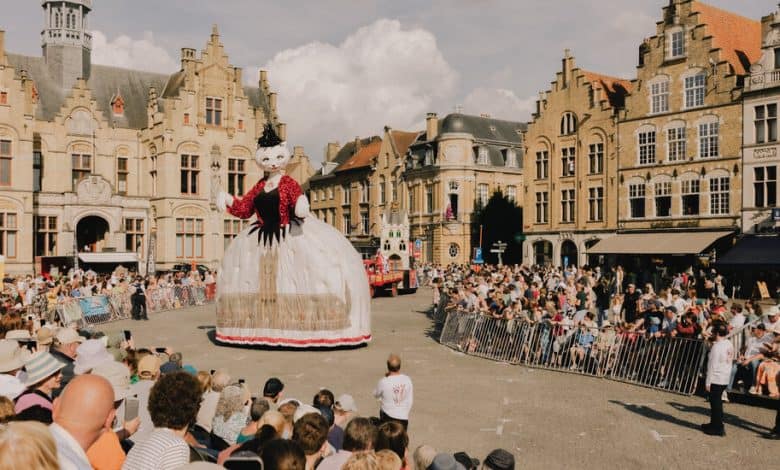A City With a Medieval History of Killing Cats Now Celebrates Them

A 7-year-old girl hawks cat-themed souvenirs in Flemish outside her parents’ shop. Two women in matching cat print dresses wander down a crowded street looking for a place to buy stuffed plush kitties. In every store and restaurant window, a cat figurine or statue signals allegiance to the feline persuasion.
This is Kattenstoet, Belgium’s cat-themed parade and festival.

The float of Minneke Poes, the feline wife of the King of Cats, Cieper, stands nearly 22 feet high and weighs 440 pounds.
Tucked among rolling farmland in the West Flanders region near the border with France, Iepers, Belgium, has not always had such an adoring relationship with cats. In the Middle Ages, when the city’s main industry was cloth making, they used cats to keep wool warehouses free of mice and other vermin. But when the felines began reproducing too quickly, town officials developed a ghastly solution: During the second week of Lent, on “Cat Wednesday,” cats were tossed to their deaths out of the belfry tower onto the town square below. At the time, the animals were seen as a symbol of witchcraft and evil, so their deaths were celebrated.
The last live cat was thrown in 1817, but Ieper (also called Ypres in French) developed Kattenstoet in 1937, a tradition to both acknowledge the city’s gruesome history and celebrate cats. The parade, which was held on Sunday, May 12, is filled with elaborate floats, costumes and performances. Afterward, a person dressed as a jester tosses stuffed animal cats from the belfry, down to the onlookers below.

A town jester throws stuffed cats from the belfry tower, a callback to the Middle Ages when the town’s administration used to toss actual cats from the same window.CreditCredit…